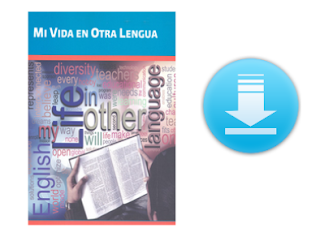UBICACIÓN: NIVEL III: MÉTODOS Y CONTEXTOS / LOCATION: LEVEL III: CONTEXT AND METHOD
 |
DA CLIC PARA AGRANDAR/ CLICK ON THE IMAGE TO ENLARGE |
Campo disciplinario / Field:
Comunicación/ Communication
Objetivo general
Que continúes con el ejercicio de tus habilidades de lectura, escritura y comunicación oral en inglés. Esta vez podràs expresar tu realidad pasada, posibilidades y hablar de proyectos a futuro en este idioma.
Comunicación/ Communication
Objetivo general
Que continúes con el ejercicio de tus habilidades de lectura, escritura y comunicación oral en inglés. Esta vez podràs expresar tu realidad pasada, posibilidades y hablar de proyectos a futuro en este idioma.
General purpose
That you keep exercising your reading, writing and oral comunication skills in English. This time yo will be able to express your past events, possibilities and to talk about your plans for the future in this language.
Introducción
Esta es la segunda incursión de nuples en el manejo de los conceptos básicos de la lengua más empleada y extendida del mundo contemporáneo. Con las estructuras y vocabulario que has adquirido en el módulo que precede a este (M5, Mi mundo en otra lengua) ahora se pretende que consigas expresar acciones que realizas en tiempo real y que poseen duración temporal (present continuous); también hablar de eventos de tu pasado (simple past tense), y con ello puedas distinguir los verbos regulares (terminación ed) de los irregulares, e incluso que comentes acerca de acciones tuyas que ocurrieron en algún momento del pasado y asimismo perduraron temporalmente (past continuous). Igualmente podrás expresarte de modo que indiques a otros peticiones de modo cortés, o hables sobre algunos deseos tuyos o posibilidades de ser (auxiliary would). Luego serás capaz de comunicar tus planes, proyectos y acciones que pretendes realizar en el futuro. Para ello te servirás del empleo de dos modalidades temporales: futuro simple (simple future, con will), y el futuro idiomático (idiomatic future, con going to). El aprendizaje se complementa con la revisión de algunas nociones de vocabulario: sustantivos (nouns) y algunas de sus formas irregulares; el empleo de las partículas some y any; los comparativos (comparatives) y superlativos (superlatives) de adjetivos de esta lengua.
¡Nuestro equipo te desea la mejor de las suertes en esta meta de aprendizaje!
Introduction
This is nuples second introduction in managing the basics of the most used and widespread language in today`s world: English. Using the structures and vocabulary learned in the previous matter, M5, My world in another language, now it is intended that you get express actions that take place in real time and last (present continuous). You can also talk about your past events (simple past) and thus you cand distinguish between regular (-ed) and irregular verbs. And even you will be able to talk about actions that were happening at some point of the past (past continuous). You will be able as well to express yourself so that you can indicate request to other in a polite way (auxiliary would). Then you will be able to communicate your plans, projects and actions that you intend to carry out somewhere in the future. The use of two temporary modalides will asist you: simple future (will) and idiomatic future (going to). The study is complemented by a review of some vocabulary: nouns and their irregular plural; the proper use of some and any, and comparative and superlative adjective forms.
We wish you a great success in this project! Our staff
.
Si deseas descargar la versión electrónica del libro de texto, da clic en la imagen de su portada.
Section 1: Change throughout the ages
|
Section 1: Where did we buy a present?
|
Section 1: Oh, the scary future! |
¿En busca de la mejor guía de estudio para este módulo?














No hay comentarios.:
Publicar un comentario